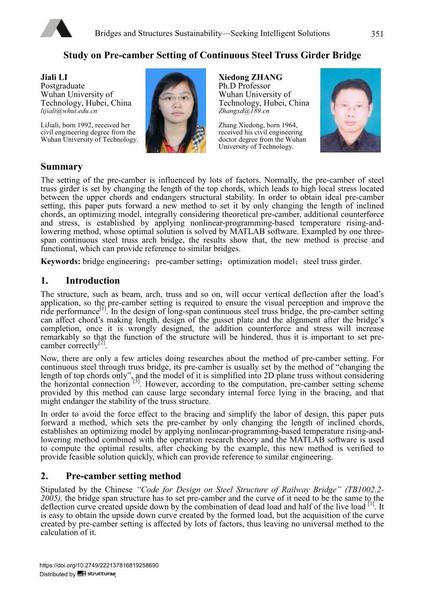Study on Pre-camber Setting of Continuous Steel Truss Girder Bridge

|
|
|||||||||||
Détails bibliographiques
| Auteur(s): |
Jiali Li
Xiedong Zhang |
||||
|---|---|---|---|---|---|
| Médium: | papier de conférence | ||||
| Langue(s): | anglais | ||||
| Conférence: | IABSE Conference: Bridges and Structures Sustainability - Seeking Intelligent Solutions, Guangzhou, China, 8-11 May 2016 | ||||
| Publié dans: | IABSE Conference, Guangzhou, China, 8 – 11 May 2016 | ||||
|
|||||
| Page(s): | 351-356 | ||||
| Nombre total de pages (du PDF): | 6 | ||||
| Année: | 2016 | ||||
| DOI: | 10.2749/222137816819258690 | ||||
| Abstrait: |
The setting of the pre-camber is influenced by lots of factors. Normally, the pre-camber of steel truss girder is set by changing the length of the top chords, which leads to high local stress located between the upper chords and endangers structural stability. In order to obtain ideal pre-camber setting, this paper puts forward a new method to set it by only changing the length of inclined chords, an optimizing model, integrally considering theoretical pre-camber, additional counterforce and stress, is established by applying nonlinear-programming-based temperature rising-and- lowering method, whose optimal solution is solved by MATLAB software. Exampled by one three- span continuous steel truss arch bridge, the results show that, the new method is precise and functional, which can provide reference to similar bridges. |
||||

